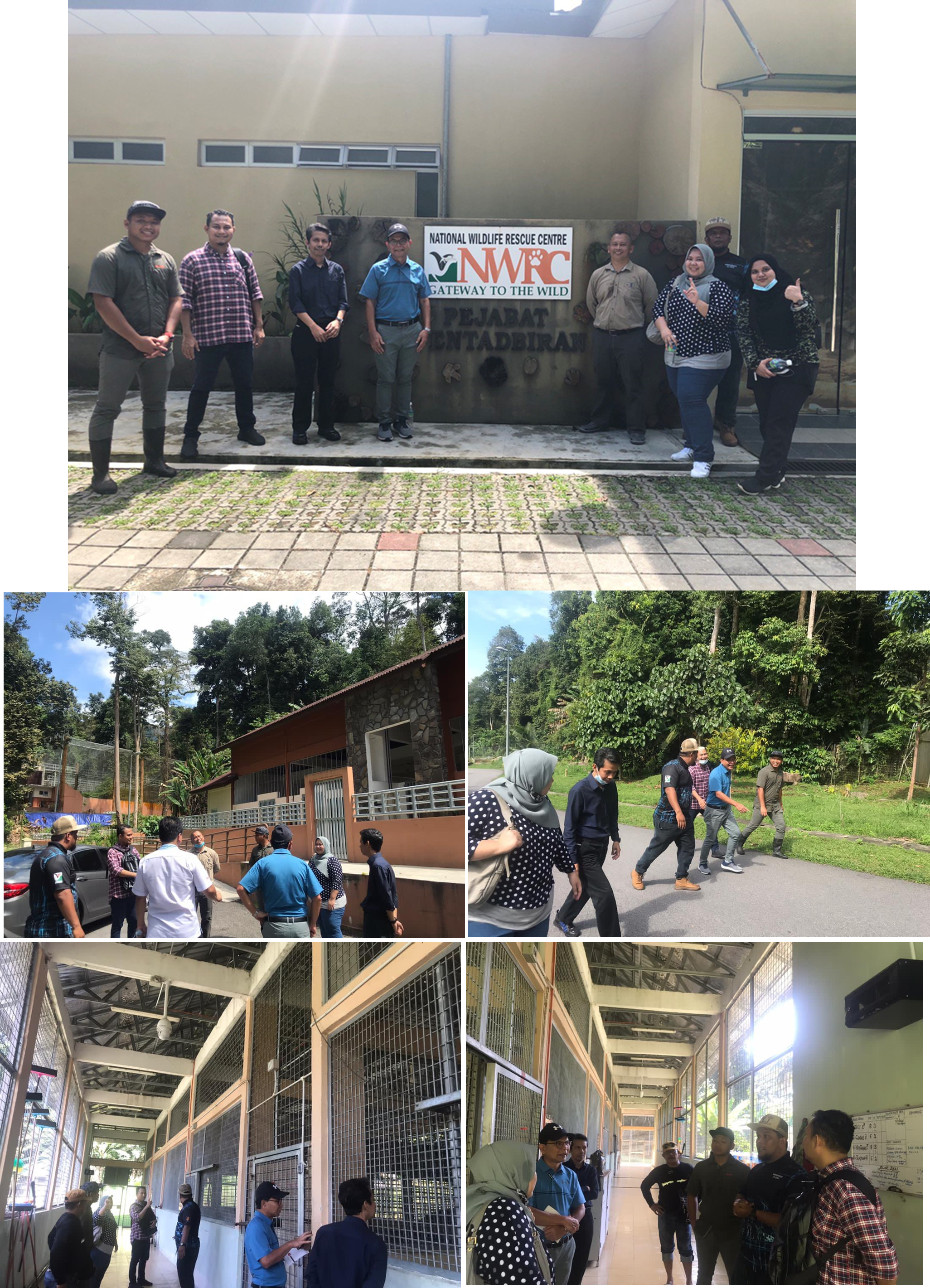norashirene (Ranking Champion, FSG)

Deputy Vice-Chancellor (Research & Innovation) of UiTM, Prof Dr Mohd Nazip Suratman received an invitation to visit the National Wildlife Rescue Centre (NWRC) at Sungkai, Perak on 11 December 2020.
His visit was accompanied by the director of Institute for Biodiversity and Sustainable Development (IBSD), Prof. Sr. Dr. Zulkiflee Abd Latif, researchers from the Faculty of Applied Science Dr Nur Nadiah Md Yusof and Dr Shafiq Mohd Aazmi as well as their MSc student, Nur Fatiha Najihah binti Mohd Fakhrul Hatta.
Also present at the event was Dr David @ Jeabeat Magintan, director of the NWRC. During the visitation, they were briefed on the functions and roles of NWRC in relation to wildlife rescue duties in Peninsular Malaysia. They also had the opportunity to see rescued wildlife species housed in NWRC such as the Malayan tigers, sun bears, Malayan tapirs, and primates.
Since 2018, UiTM has signed a Memorandum of Understanding (MOU) with Jabatan PERHILITAN with a goal to strengthen the research in biodiversity and sustainable development. The NWRC, under Jabatan PERHILITAN is a wildlife rescue centre aims to rescue and protect endangered species in Peninsular Malaysia including the Malayan tigers. As these captive tigers are confined in a limited space in comparison to when they were out in the wild, it might be affecting their normal behaviors that could lead to stress, which is also associated with increasing faecal glucocorticoid metabolite.
In the effort of improving the welfare of Malayan tigers, a collaborative research project between the Faculty of Applied Science and NWRC is established. The two-years project entitled as the ‘Stress-related behavior and physiology of captive Malayan Tigers (Panthera tigris jacksoni)’ will bridge the common interests of both parties and contribute towards better understanding of stereotypic behavior and physiological stress among captive tigers.
With this knowledge, more effective protocol and management strategies for these endangered species can be developed to minimize stress and enhance their welfare in captivity.